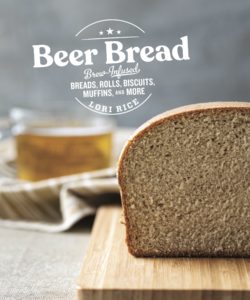Why Eating Real Food Is Important to Me
June 3, 2009
Falling for Goat Cheese
May 27, 2009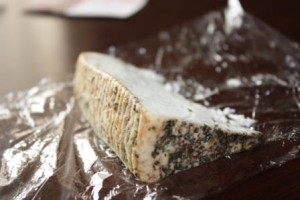 I’ll be honest. The first time I had goat cheese I did not care for it. There was something about the tart and tangy taste that would take some getting used to for me. After my somewhat negative flavor experience I began to find myself sifting through beautiful recipes in the food blogging world and feeling like a bit of an outcast because I wasn’t crazy about goat cheese.
I’ll be honest. The first time I had goat cheese I did not care for it. There was something about the tart and tangy taste that would take some getting used to for me. After my somewhat negative flavor experience I began to find myself sifting through beautiful recipes in the food blogging world and feeling like a bit of an outcast because I wasn’t crazy about goat cheese.
After a little research I’ve realized that my first encounter was with chevre – the fresh, soft, French-style. I haven’t had it in a long while so I can’t be sure my tastes haven’t changed, but because of this experience I’ve stayed away from goat cheeses.
Well, until a couple weeks ago.
At that time I was in the middle of my visit to Lexington, KY, where I lived prior to my move abroad. I was scheduled to run a 5K that Saturday morning, but I got up early just so I could make a round at the Farmer’s Market before heading out to the event. As I was walking down the street I noticed a cheese vendor out of the corner of my eye.
The gentleman manning the booth was in the process of setting out samples as he was speaking to a customer about his product. I overheard the conversation and quickly learned that it was goat cheese. But wait. It didn’t look anything like the goat cheese I had before.
It was sliced in wedges from a round wheel of cheese and had a beautiful molded rind around the exterior. I could smell the intoxicating aroma as he pulled the different varieties out of the box. After their conversation ended I took the opportunity to learn more about this goat cheese.
Well, first of all, it is a local Kentucky product from a company called Sapori D’Italia. Second, they are Artisan Cheese Makers producing authentic “old world” Italian cheeses. How authentic? Well, the Cheese Master is from Napoli. Who knew we had such wonderful Italian culture in good ol’ Kentucky!
I was given a sample, and remembering my past experience, I gave it a chance but was expecting the worst. The final call – I had some of the most amazing cheese I have ever tasted! I am not exaggerating. It was fantastic!
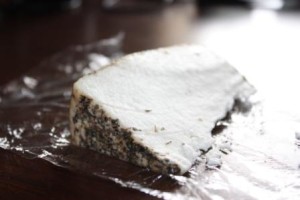
He had carefully removed the rind and you might expect that the flavor would go with it, but the herbs that encrusted the outside had seeped into the cheese giving it the most amazing flavor. The texture was somewhat crumbly like a feta, but the moment it hit your tongue it became creamy and smooth.
I later learned that I had sampled the Caciotta Alpina al Erbe, a variety encrusted and aged in Italian herbs. This is only one of six types they make, according their web-site.
After talking a bit about my work and food blogging I was given a generous sample of a wedge to enjoy later. Since I was in a hotel at the time I don’t have any fabulous recipes to share with you using it, but honestly this cheese needs no co-star.
I ate it by itself and enjoyed every bite. I can only imagine how wonderful it would be with some sweet fruit or atop a leafy green salad.
The good news is the availability of this goat cheese is spreading quite rapidly. In addition to the Lexington Farmer’s Market it can be found in many stores in Lexington and Louisville, KY as well as stores in Ohio including some Whole Foods. It is also served in a variety of restaurants in the area. You can find out more about availability here.
If you have the opportunity to get your hands on some of this cheese I would highly recommend it. I am happy to say that I am now truly a lover of goat cheese.
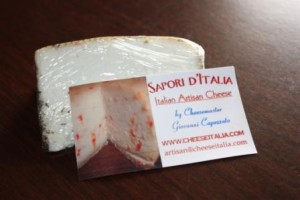

Setting My Own Guidelines
April 21, 2009
What are your personal guidelines? Have any to add?
Lovely Limes
April 10, 2009If you give me the choice of a lemon or a lime, I’ll likely choose the lime every time. This goes for the twist I put in my sparkling water as well as for flavors in desserts.
I just happen to be in the world’s most perfect place for a lime lover. I might mention that this is a good thing since there are no lemons where we live in Brazil.
I’m not sure about other areas of the country, but most people here really aren’t familiar with lemon. Many of the (Brazilian) English teachers we have met translate limão to lemon, but this is not correct. Limão is a lime, not a lemon so we try to clear up this confusion when we get the chance.
My appreciation for the lovely limes here came to mind on Wednesday night as I shopped at the local farmer’s market in town. Many of the vendors there sell a variety of items. For example, a booth that has lettuce will also have carrots and herbs. However, there is this one particular booth manned by an older couple and the product they offer is limes, just limes.
These are some of the largest, brightest limes I’ve ever come across. I buy from them every week and I am amazed each time they place my bag on the scale and tell me the price. This week I paid 30 centavos for these limes. That is less than fifteen cents. Fifteen cents for five beautiful limes! That is a far cry from the 44 cents each I saw on my last trip in the US.
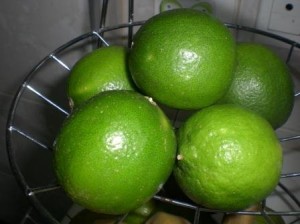
I’m typically a lover of rich and heavy desserts, but I have found since being around all this fresh lime juice my dessert preferences here in Brazil are very different. I love the variety of desserts using lime and my favorite is the Torta de Limão, Lime Pie. It’s sort of like a Key Lime pie, yet that still doesn’t adequately describe it. It is something that I will likely always associate with Brazil.
There is a catch, though. I have had Torta de Limão that I didn’t care for. As you probably guessed, this dessert calls for sweetened condensed milk (what would a dessert in Brazil be without it?). Some varieties use too much milk and not enough lime for my tastes. I like that tart, almost bitter flavor and prefer that the sweet flavor doesn’t take over.
One of my favorites has been the one I’m picturing here. An individual serving we picked up at a local bakery. So no, I didn’t make this, but I did take the photo. Isn’t it beautiful?



The truth is, I’ve never made Torta de Limão, or at least I haven’t yet. I do, however, have the recipe.
After just a few months of living here a girl in town contacted me through my ex-pat blog. She taught at an English school, it was Thanksgiving time and she wanted a recipe for pumpkin pie. I was happy to help, but secretly wanted something of my own out of the deal. I asked her for a recipe for Torta de Limão.
She shared with me her recipe for Lime Mousse. This is the filling for the pie and can be eaten by itself if you so desire. To turn it into pie form, use your favorite pie crust and bake it through. Add this filling, and then you can top it with meringue. Pop it in the oven to brown or dry the meringue and there you have it. It is similar to any meringue topped pie although served room temperature or cold.
I should mention that here, they often use a packaged whipping cream instead of the beaten egg whites. This browns up nicely and is creamier, but I really don’t know what the equivalent would be in the US. I’m not sure if whipped cream would brown up/harden or not.
Also, aside from this little one I’ve showed you, the torta I have come across here don’t resemble pie in the US. The crust is typically made in a tart pan so the whole dessert is rather flat and thin, not like our deep dish pies in the States.
Mousse de Limão
1 can of sweetened milk
1 can of creme de leite (Her description: “It’s like sour cream but less sour.” I’m not sure we have an equivalent in the States. Maybe crème fraiche?)
1 cup of fresh lime juice (about 4 limes)
Mix in a blender until gains a firm appearance. It can be refrigerated before eaten or use it to put together your own Torta de Limão.
Kind of Like a Cherry
October 24, 2008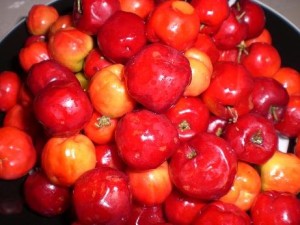 I got something interesting at our farmer’s market this week so I thought I’d go back to my “foods of Brazil” for this post. This week, many of the booths had bags toppling over, full of these little red fruits – acerola.
I got something interesting at our farmer’s market this week so I thought I’d go back to my “foods of Brazil” for this post. This week, many of the booths had bags toppling over, full of these little red fruits – acerola.
I’ve had acerola before in the juice form at the hotel breakfast here in town. Did I mention we lived in a hotel of a few months before getting into our apartment? Man, that breakfast got old!
Anyway, I had never ventured to try the actual fruit. I’ve only seen it at the market a few times and considering how fast they are going in my fridge right now, they aren’t the most stable of fruits.
Acerola appears to be pretty popular in the supplement world and is often sold in a powdered form. Its popularity comes from its utterly amazing amount of vitamin C content.
In a cup of the fruit there is 1644 mg of vitamin C! Compare that to 63 mg in an average-sized Florida orange. Wow!
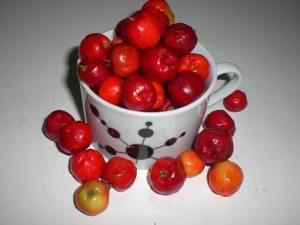 How lucky am I to get to eat the actual fruit and drink the juice instead of sucking down a supplement!
How lucky am I to get to eat the actual fruit and drink the juice instead of sucking down a supplement!
Acerola is in the cherry family, but different than many fresh cherries I’ve had before. It is available in many other places in addition to Brazil. I saw some info that it is grown in California.
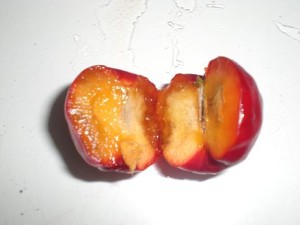
The texture to me was like a cross between a cherry and a peach. The flavor isn’t very distinctive. It isn’t overly sour or sweet, kind of bland. Each of the cherries has 3 seeds in it which makes it difficult to get to any of the flesh. I solved that problem by throwing it in the juicer.
It made a thick pulp to which I added water. It needed just a tiny bit of sugar to enhance the flavor and ended up being a great snack. I’ve still got a couple more cups in the fridge to finish. I’m stocked with vitamin C and ready to fight any infection that may arise!
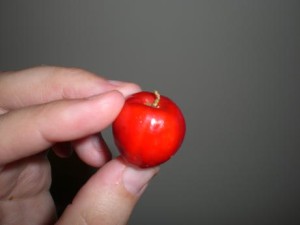
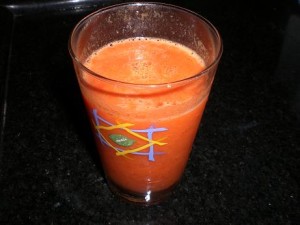
Transport Dilemma
August 6, 2008 With all the efforts around to maintain more environmentally conscious habits, I’ve had food transport on my mind a lot lately.
With all the efforts around to maintain more environmentally conscious habits, I’ve had food transport on my mind a lot lately.
I read this post last week on Tonic News Network which talks about some recent research and the energy consumed through food production and transport.
It provides even more support for reducing consumption of processed foods, but that is not why it has me thinking.
Buying local is becoming more and more important to me as I gain knowledge about its benefits to both health and the environment. However, there are a lot of healthy, real foods I love which are not local. These foods I love must be transported to my local supermarket or even Farmer’s Market.
I enjoy eating in season, as it is often referred to, but what happens when a specific food is never in season near you.
Many of you know I live abroad right now so I have access to a lot of unique fruits and veggies. However, when I travel back, and in less than a year, move back the transport issue poses a huge problem.
Here are a few things I enjoy that won’t be growing in my neck of the woods in the US any time soon.
Oranges
Pineapple
Limes
Lemons
Peaches
Cranberries
Bananas
I mean, do I make the decision to never eat these foods again because of the amount of energy it takes to get them to me? Not only do I like these foods, but they offer many nutritional benefits.
I have to say, I would really be sad to see them go, especially the cranberries at holiday time. I love cranberries. But I also want to be environmentally friendly at the same time.
I am sure there are efforts out there to figure out a way to transport using less energy. I hope so anyway.
I am just wondering if anyone else is feeling like this. What is the solution to the dilemma of buying local, being green, yet still enjoying some pretty great foods that are great for you?
Photo by mconnors, morguefile.com
Are You a Locavore?
June 4, 2008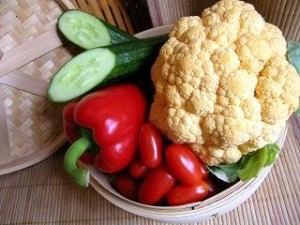 I was thumbing through my Metropolitan Home magazine this past weekend. I still question why I read this at times because most of the sofas featured cost half my salary. However, I got the subscription for free and I like to try to recreate the things I see in it for a more realistic price.
I was thumbing through my Metropolitan Home magazine this past weekend. I still question why I read this at times because most of the sofas featured cost half my salary. However, I got the subscription for free and I like to try to recreate the things I see in it for a more realistic price.
Every now and then there are some short blurbs about topics that are interesting with links to some new web-sites. This weekend there was an ‘every now and then’ event.
Maybe I’ve been completely out of it, but I have never heard the term Locavore. According to the magazine a Locavore is someone who tries to eat foods that are grown or produced locally. From the limited research I’ve done, it looks like it was started in San Francisco. Big surprise there. I think all physical and environmental health movements began somewhere in that area.
The important word here for me is ‘tries’. It is almost impossible to get all of your food locally depending on where you live, but I definitely think it is important to put forth an effort.
Right now I am living abroad in Brazil and I think I can claim to be a true Locavore. I buy my foods from the farmer’s market each week which comes from farmer’s who live in and outside my town. Between this and my local bakery, I would estimate that 80% of the food I eat is local.
Maintaining my Locavore status will probably prove to be a more difficult task when I move back to the States, but that won’t stop me from trying. It is a great way to reduce fake foods. The more produce and fresh products you eat the less room you have for all those packaged non-food items.
The challenge for me will be the price. Yes, it is worth it, but our local farmer’s market in the US is quite expensive. I want those farmers to have the money they need, but many times I feel like they are cashing in on all the higher society people who have the money to spend there.
Then again, a recent trip to the grocery store in the US showed me that prices for produce have skyrocketed there as well. So maybe there isn’t much of a difference at this point.
Are you a Locavore? What are some of the challenges you face with being or becoming one?
Photo by jeltovski at morguefile.com






